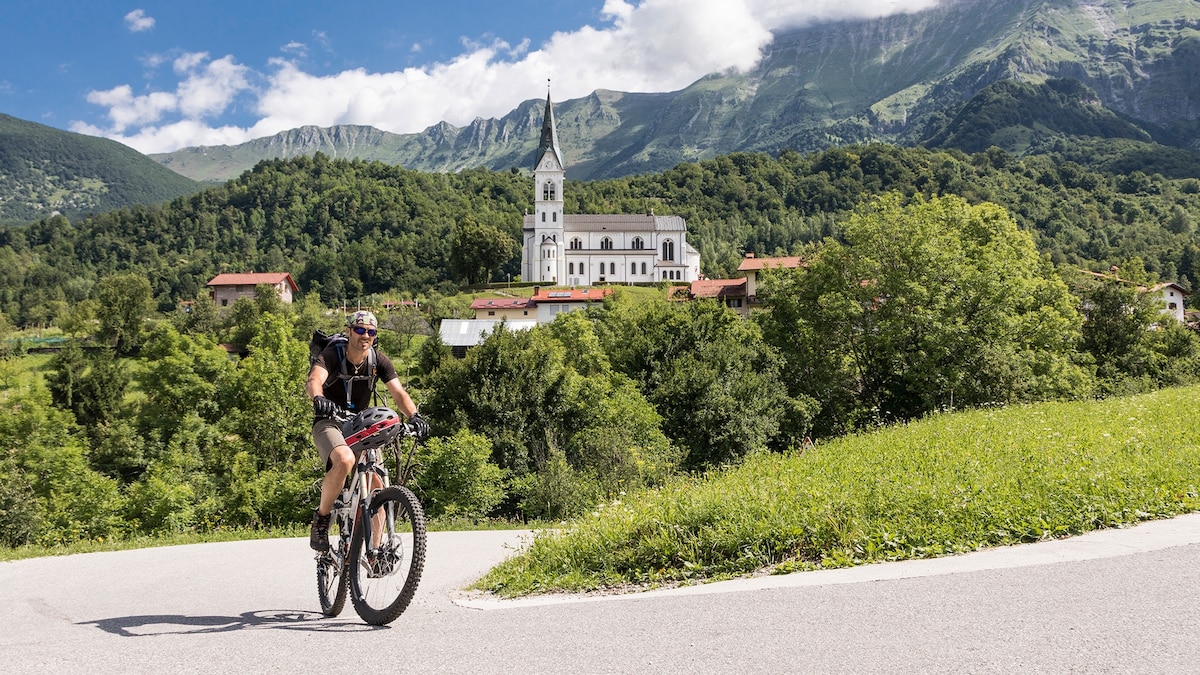This article was produced by National Geographic Traveller (UK).
Slovenia is perfectly primed for those on two wheels. The small country in Europe’s south east has dominated professional competitions in recent years, taking top podium spots at the Tour de France, Giro d’Italia and Vuelta a España. In 2019, it launched Slovenia Green, a network of six themed, multi-day cycling routes, with options including wellness, gastronomy, cultural diversity and more. Crucially, they all link destinations and businesses with Slovenia Green certification, which guarantees sustainable practices. It’s all based on a simple philosophy: if you make it easy for visitors to choose responsible travel options, they will.
Should I do it alone or join a tour?
For cyclists used to multi-day cycling journeys, these routes provide everything one might need for a solo trip. The stages are typically around 30 to 35 miles long, a distance designed not to overwhelm — there’s enough time to see the villages along the way and, crucially, you’re always within range of civilisation in case of emergency. Should you need to call for help, there’s good phone service across Slovenia.
Are routes easily signposted for international travellers?
All Slovenia Green Routes are navigated with GPX tracks that are kept up to date and that cyclists can download for free on the Slovenia Green site. Although such tools can be intimidating for some, having precise directions on your device is safer and better for the environment than physical signs. Also available on the website are service providers and options for accommodation and restaurants.
Which route should I pick?
A 15-day, 535-mile cycle-and-train itinerary, the Slovenia Green Gourmet Route was launched in 2020, coinciding with Slovenia receiving its first Michelin stars, as well as being named the 2021 European Region of Gastronomy. Like most Slovenia Green Routes, it connects nearly every key area of the country, from the western Julian Alps to the northeastern Pannonian Region.
In 2023, five new stages were added, bringing the total number to 16: the route now stops in Škofja Loka, Kranj and Radovljica — gateway towns to the Alps, lying to the north of Ljubljana, that were previously not routed for cycles — as well as Postojna, famous for its network of karst caves, and Krško, which sits on the Sava River near the eastern border with Croatia. It averages around 30 miles per day, and the terrain is easily managed, varying between quiet, asphalt streets, dedicated bike paths and packed-gravel woodland roads.
What type of bike is best?
Slovenia Green Routes combine a mixture of surfaces: the majority of time you’ll be on asphalt roads, but expect to also pedal along farm roads and packed trails. As such, gravel bikes are your best bet, combining the geometry and feel of a road bike with the ruggedness of a mountain bike.
Should I take my own bike and equipment?
The question of whether to bring your own bike is a personal one. Some cyclists won’t fly their own bike for trips less than two weeks, for example, while others prefer to travel with panniers but rent the bicycle itself. If you do want to rent, head to Visit Good Place for gravel bikes hire, as well as expert knowledge about Slovenia Green Routes.
How do I pack for a multi-day cycling trip?
The general rule is: think about what you can’t live without, then pack half of it. In the case of Slovenia Green Routes, you won’t need camping or cooking gear, so it really comes down to personal items and tools. Most cyclists would be set with two jerseys, two pairs of socks and two bibs (cycling shorts), washing and rotating each day, plus foul-weather gear. Aside from that, one set of regular clothes and toiletry kit should suffice. Don’t forget basic tools for flat tyres and adjustments, and lights.
To subscribe to National Geographic Traveller (UK) magazine click here. (Available in select countries only).
